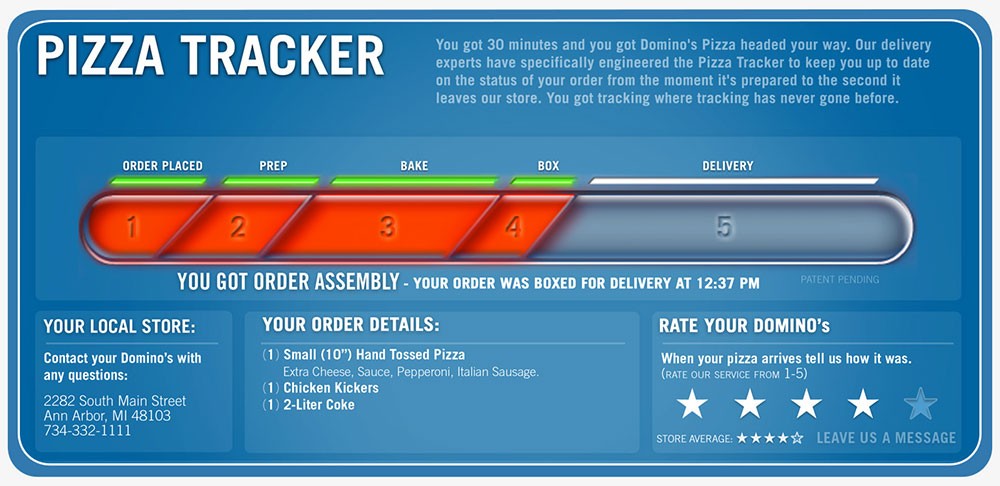5 Data-backed Insights That Will Improve Your Candidate Experience
41% of applicants who have terrible candidate experiences (rating them one out of five stars) say they’ll take their loyalty and money elsewhere. But for candidates with five-star experiences, 64% say they’ll definitely increase their relationship with the employer—even if they didn’t end up getting the job.
As illuminating as that statistic is, it’s just one of hundreds of intriguing and often surprising facts available in the 2016 North American Candidate Experience Research Report compiled by the Talent Board. A nonprofit research organization, the Talent Board gives out the CandE Awards (short for candidate experience, of course) and has conducted similar research for six straight years, unlocking major insights into the ways both candidates and employers view the hiring process.
For the report, they interviewed 240 companies and over 183,000 candidates to learn how candidate experiences are evolving from both sides of the table—here are five key takeaways and suggestions that stood out from reviewing their findings.
1. Candidates want a “progress bar,” but many aren’t given access to regular status updates
Ever used Domino’s pizza tracker? It’s a marvel of modern marketing and technology that tells you exactly where your pizza is in the cooking and delivery process—and customers eat it up. Consumers love detailed tracking and status updates, whether it’s for an incoming pizza or the arrival of a friend in an Uber—and today’s candidates are no different.
According to the Talent Board’s research, job seekers want (and increasingly expect) insight into two areas: how far along they are with the application as they’re completing it, and status updates as they go through the hiring process. In a sense, this all relates back to receiving regular feedback, which statistics reveal as one of the most important aspects of the candidate experience.
“Candidates want to understand their progress,” says the Talent Board’s report. “When customers shop online, they have insight into how many steps are left before they complete their purchase. Candidates deserve a similar experience.”
Yet many employers still fall short: Though 52% of candidates with five-star experiences were given an application progress indicator, only 4% of overall candidates say they were given a link to check their status after applying.
Clearly, providing regular updates improves the candidate experience, and recruiters should let candidates know where they stand frequently, whether through tracking technology or simply by increasing touch points.
2. Candidates aren’t using their phones to apply to jobs, but they are searching for opportunities on mobile
According to the Talent Board’s data, mobile continues to be one of the biggest areas for new TA investment. 79% of surveyed employers allow candidates to apply to jobs via mobile, according to the 2016 report—an increase of 18% in just a year—and many more have plans to enable mobile applications imminently.
However, the data also reveals that most candidates aren’t actually using their phones or tablets to apply for jobs. Though that number has gone up a tiny bit in recent years, just 12% of candidates applied on mobile devices in 2016.
That said, many candidates perform their initial research on their phones, then move to laptops or desktops to complete the actual application. For example, of the one billion job searches performed each month, 60% are done on mobile. When candidates have their resumes pre-saved on sites like LinkedIn, they can then take advantage of streamlined (even one-button) application processes as soon as they find an open position.
Simply put, recruiters should make sure their job listings are mobile-friendly and invest in building up an application process which doesn’t require access to a desktop computer.
3. Positive and negative candidate experiences get amplified quickly on social media
Recruiters already know that a bad candidate experience can quickly turn into a triple whammy: a lost candidate, a lost customer, and a missed opportunity for referrals.
But there’s another problem: As Virgin Media learned, the hit you take from a single negative candidate experience could become millions of dollars when you factor in the friends and family that they share their experience with.
First, the bad news: The data shows that social media sharing might mean the hit is even worse than that. Candidates share their negative experiences 34% of the time on social media, broadcasting the gory details to a gigantic audience.
These upset candidates often use social media the same way disgruntled consumers do:
“How many of you have used social media to garner customer service action instead of growing old waiting on the customer service phone trees? [...] The same is true for job seekers… Those negative experiences not only potentially impact the employment brand and direct revenue... but also diminish [recruiters’] ability to attract sought-after talent and the referral networks that come with them.”
Fortunately, there’s also good news: According to the report, candidates are even more likely to share their positive experiences. They share them with “inner circles” more than 81% of the time, and go online to tell positive candidate stories about 51% of the time via social media.
In other words, bad experiences can cost your company on a large scale through social media proliferation—but you can also turn that perception around quickly by taking immediate steps to rectify the situation.
4. Respecting the candidate’s time is really, really (really) important
When it comes to candidates voluntarily withdrawing from the application process, it’s all about time—wasting it, that is. The longer you drag the process out, the more likely the candidate is to become frustrated and lose interest in the position.
In the report, “respect for candidate time” and “length of overall time” were the two most commonly cited reasons for candidate withdrawal. And among candidates with one-star overall experiences, 19% felt their time was not respected during interviews and other appointments.
Most meaningfully of all, 99% of candidates with five-star experiences said they did not have problems with recruiters disrespecting their personal time.
In short, though recruiters already know respecting candidates’ time is important, the data shows it could actually be the single biggest difference between a positive and negative experience.
5. You probably aren’t providing enough employee testimonials
Here’s one area that most recruiters and TA teams can easily improve on: providing actual employee testimonials in your career sites and posts.
You probably know that employee-based content is incredibly valuable to candidates—and that employee referrals are now the number one source of quality hires. In fact, the report reveals that candidates now value the words and opinions of existing employees more than they did even just a year or two ago.
Career sites are still the most valuable source for job information, says the data, but modern, Internet-savvy candidates are increasingly wary of taking employer-based information at face value.
“Candidates no longer want to go directly to the source to discover information about the company and the job,” says the report. “They want to hear from existing employees and peers.”
But employers can also improve their own career sites, job descriptions, and employer branding by incorporating authentic employee content. For the report, candidates were asked what types of job and marketing content they considered most valuable. Employee testimonials landed right near the top at 36%, a 3% increase since 2014; meanwhile, 35% called out salary and compensation, 5% less than two years ago.
Taken together, these five takeaways paint a clear picture: By keeping candidates updated on their progress, respecting their time, and giving your existing employees an authentic spotlight, you can make huge, impactful improvements to your candidate experience.
* image by clement127
To receive blog posts like this one straight in your inbox, subscribe to the blog newsletter.
Topics: Data insights
Related articles




